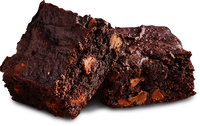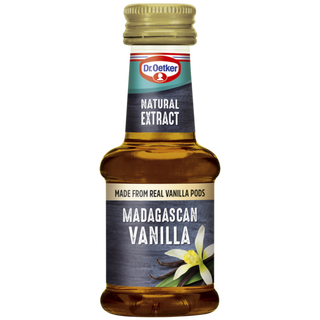Milk Bread


475
8 Portions
Intermediate
165 minutes
Looking for the perfect bread recipe? This delicious milk bread has a soft, cloud like texture - perfect for the whole family to enjoy! Get started.
Made with milk, sugar, and butter, this bread is a delicious and indulgent treat that's perfect for breakfast, lunch, or as a snack.
Recipe Ingredients
How to Prepare
Recipe Ingredients
For the Milk Bread Starter
50 g
Strong White Bread Flour
100 ml
Whole Milk
50 ml
Water
For the Bread Dough
425 g
Strong White Bread Flour
60 g
Caster Sugar
7 g
Fast-action dried yeast
150 ml
Whole Milk
1
Medium Egg
35 g
Unsalted butter (melted)
10 ml
Egg Glaze
1
Medium Egg
15 ml
Whole Milk (1 tbsp)
Sugar Syrup
50 ml
Water
50 g
Caster Sugar
Buy the Products
Dr. Oetker Madagascan Vanilla Extract (2 tsp)
How to Prepare:
1
For the Starter
The bread starter will help give your milk bread the lovely fluffy cloud like texture inside, you can make this justbefore you begin to make your dough. Pop the flour, milk and water into a saucepan over a medium heat. Whisk together to create a smooth paste, continue to heat and whisk until your mixture begins to thicken and reaches around 65°C. Scrape into a glass bowl and leave to cool slightly.
2
For the Bread Dough
Pop your flour, sugar and yeast into a large bowl or bowl or a free standing mixer and mix together.
3
Heat your milk to around 40-45°C, it should feel slightly warm touch – it is easiest to do this in the microwave for about 30-40 seconds. Add the egg, melted butter and Vanilla Extract and whisk together to combine.
4
Pour into the flour mixture and add your cooled starter. Bring the dough together, either using a free standing mixer fitted with a dough hook on a low speed, or using a spatula.
5
Once your dough is combined turn up your mixer speed to medium and knead your dough for about 8-10 minutes until it stops sticking to the sides of the bowl. To test your dough is kneaded, stretch a small piece of dough and it should stretch thinenough to see light through and not snap, if it snaps then continue to knead for longer. If you are kneading by hand, you might need to knead the dough for 5 or so minutes longer.
6
Once you have a lovely smooth elastic dough, pop in a large oiled bowl and cover, leave to proof for about 1 – 1 ½ hours or until doubled in size.
7
Once your dough has doubled in size, pour out onto a surface dusted with flour. Briefly knead to knock out any air bubbles and then divide your dough into 8 equal pieces.
8
Roll each pieces of dough to approx. ¼ inch thickness and then fold into thirds. Tightly roll up the dough with the folds in the dough folding inwards so the outside of your dough is smooth. Next roll into a ball pinching the joins in the dough at the base, this helps to create a layered dough texture when your bread bakes.
9
Pop your ball of dough into an oiled 9 inches spring form cake tin, you should have 7 balls of dough around the edge and 1 in the middle. Cover and leave for about 20-30 minutes until puffed up, to test your dough is ready to bake make a small indent in the side of the dough with your finger and it should very slowly spring back still leaving a small indent.
10
About 10 minutes before baking pre-heat your oven to 180°C/160°C/Gas mark 4. Briefly whisk together the egg and milk to make the glaze and brush over your dough. Pop in the oven for about 30-35 minutes until golden brown on top and when tapped the bread sounds hallow. If your bread is browning too quickly, cover with foil and pop back in the oven to continue to bake.
11
Whilst your bread is baking, make the sugar syrup, pop the water and sugar into a saucepan over a low heat, stir until the sugar has dissolved. Turn up the heat to medium and leave to simmer for 3 minutes without stirring. Remove from the heat and leave to cool.
12
Once your bread is baked, brush over the sugar syrup and leave to cool in the tin for about 20 minutes and then pop onto a cooling rack to cool completely.
13
Your milk bread in now ready to tear and share!
Tips
You bread is best eaten fresh on the day it is baked, you can keep it for up to 1 day or freeze after baking for up to 3 months. Learn more about freezing bakes from our handy guide.
Tips
To give your milk bread a splash of fun and colour, why not top with glace icing and Dr. Oetker Bright and Bold Sprinkles, they taste and look great with sweet bread!
Tips
1:
You bread is best eaten fresh on the day it is baked, you can keep it for up to 1 day or freeze after baking for up to 3 months. Learn more about freezing bakes from our handy guide.
2:
To give your milk bread a splash of fun and colour, why not top with glace icing and<a href="https://www.oetker.co.uk/products/p/bright-and-bold"> Dr. Oetker Bright and Bold Sprinkles</a>, they taste and look great with sweet bread!
PLEASE RATE THIS RECIPE
How did this recipe go?
RELATED RECIPES
More delicious ideas for you
Classic White Bread Loaf

Bread Recipes
170 MinIntermediate
Classic White Bread Loaf
See Recipe Details
170 MinIntermediate
Classic White Bread Loaf
Soda Bread

Bread Recipes
20 MinIntermediate
Soda Bread
See Recipe Details
20 MinIntermediate
Soda Bread
Baked Doughnuts

Bread Recipes
225 MinIntermediate
Baked Doughnuts
See Recipe Details
225 MinIntermediate
Baked Doughnuts
Chocolate and Vanilla Swirl Bread

Bread Recipes
85 MinIntermediate
Chocolate and Vanilla Swirl Bread
See Recipe Details
85 MinIntermediate
Chocolate and Vanilla Swirl Bread
Gluten Free Cinnamon Rolls

Bread Recipes
180 MinIntermediate
Gluten Free Cinnamon Rolls
See Recipe Details
180 MinIntermediate
Gluten Free Cinnamon Rolls
Pizza Dough

Bread Recipes
120 MinIntermediate
Pizza Dough
See Recipe Details
120 MinIntermediate
Pizza Dough
Cinnamon Rolls

Bread Recipes
180 MinIntermediate
Cinnamon Rolls
See Recipe Details
180 MinIntermediate
Cinnamon Rolls
Follow Us
Follow Dr. Oetker on Social Media
Prep:165 minutesIntermediate8 Portions
Stay up to date
Sign up to the free Dr. Oetker Pizza or Home Baking Newsletter and receive delicious recipe ideas, helpful hints and tips, news about the latest products, special offers and events!








